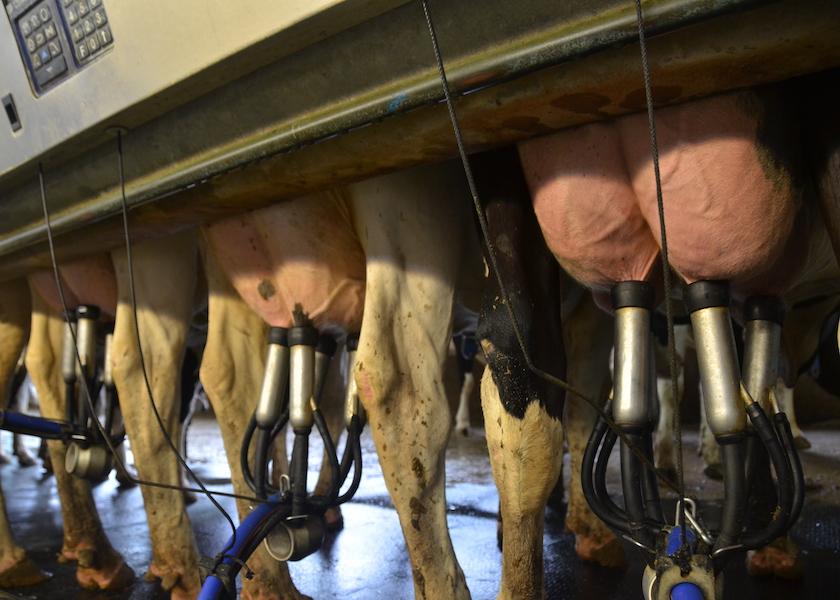Tips to Minimize Antibiotic Usage for Mastitis

When a cow flares up with mastitis, often a farmers first reaction is to administer an antibiotic, discard the milk and hope she’s ready to go back in the tank within a few days. However, constantly utilizing antibiotics is not always a viable practice according to Pamela Ruegg, professor and extension milk quality specialist at Michigan State University.
“Antibiotic usage is an important tool for dairy farmers, but it is important to ensure that antibiotic usage is minimized to maintain animal welfare and farm sustainability,” Ruegg says. “Inappropriate usage of antibiotics includes both overtreatment and undertreatment.”
During a recent research study, Ruegg worked with a team of researchers from the University of Wisconsin-Madison to collect animal health and treatment data from 40 large Wisconsin dairies. The goal of the study was to develop evidence-based guidelines that help farmers and their veterinarians understand when antibiotic usage is both cost-effective and beneficial to the animals.
“While the overall objectives were focused on risk factors for exposure of farm workers to resistant bacteria, we also sought to determine how farms varied in the usage of antibiotics and what diseases accounted for most antibiotic usage,” Ruegg notes.
Data from the study found that the number of daily doses of antibiotics per cow per year varied enormously among farms.
“The least using farms used about 2 daily doses per cow per year, while the greatest using farms used 6 times as much,” Ruegg says. “Antibiotic treatment of dry cows and of clinical mastitis cases accounted for greater than 75% of all antibiotic usage. One take-home message from this study was that many farms can reduce antibiotic usage by changing protocols used for mastitis treatments and for dry cow therapy.”
To Treat or Not to Treat?
While it can be tempting to immediately treat a mastitis case with antibiotics, Ruegg recommends taking a step back to analyze the situation.
“We can reduce costs of treatment and reduce the number of doses of antibiotics used on dairy farms by modest changes to the way that we treat mastitis,” she says.
To help minimize antibiotic usage, consider the following:
- Most non-severe cases of clinical mastitis that are caused by E. coli or are culture negative when detected don’t require antibiotic therapy as the spontaneous cure rate is similar to the treatment cure rate.
- According to Ruegg, farmers spend between about $125 and $300 per case in direct treatment costs. Of direct costs, 80% are related to costs of milk discard, which increase as duration increases. Each additional day adds considerable costs without improving outcomes, and many farms can save money by reducing the number of treatment days.
When cultures of milk from non-severe cases of clinical mastitis result in Gram-positive growth, Ruegg recommends that intramammary antibiotics are given for the shortest duration that is listed on the product label to help minimize losses.
Lowering antibiotic usage is not only considered a good management practice, but it can help keep hard-earned dollars in one’s pocket without negatively impacting animal welfare or productivity.
For more on milk quality, read:
- Make the Most of Milk Check by Maximizing Components
- Higher Components and Parlor Efficiencies Helps Rosy-Lane Holsteins Bottom Line
- What’s Causing Your PI Count to Spike?







